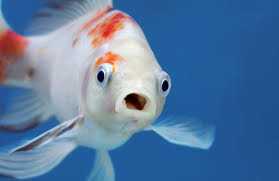Aquaculture Company , or fish farming, has become a critical solution for meeting the growing global demand for seafood. As wild fish stocks face overexploitation and environmental challenges, aquaculture offers a sustainable alternative for feeding the world’s population. However, traditional fish farming methods have often been associated with environmental concerns, including water pollution, habitat destruction, and resource overuse.
To address these challenges, aquaculture companies are increasingly embracing cutting-edge technologies to make fish farming more eco-friendly and sustainable. These advancements not only help preserve the environment but also ensure higher productivity, healthier fish, and improved economic outcomes for farmers. This article explores the latest technological innovations that are transforming aquaculture into a more sustainable industry.
The Need for Eco-Friendly Fish Farming
With the global population projected to reach 9.7 billion by 2050, the demand for protein sources, including seafood, is expected to skyrocket. According to the Food and Agriculture Organization (FAO), aquaculture already accounts for over 50% of the world’s seafood supply and is expected to grow further. However, traditional fish farming practices have raised environmental concerns, such as:
- Water Pollution: Excess feed and fish waste can lead to nutrient overload in water bodies, causing algal blooms and oxygen depletion.
- Habitat Destruction: Coastal ecosystems, such as mangroves and wetlands, have been destroyed to make space for fish farms.
- Overuse of Resources: Fishmeal and fish oil, derived from wild fish, are often used as feed, putting additional pressure on marine ecosystems.
- Disease Outbreaks: Overcrowded fish farms can become breeding grounds for diseases, which may spread to wild fish populations.
Eco-friendly technologies aim to address these challenges by reducing the environmental footprint of aquaculture while maintaining or even increasing productivity.
Technological Advancements in Eco-Friendly Fish Farming
1. Recirculating Aquaculture Systems (RAS)
One of the most revolutionary advancements in aquaculture technology is the development of Recirculating Aquaculture Systems (RAS). These systems allow fish to be farmed in land-based, closed-loop environments where water is continuously filtered and reused.
Key Benefits:
- Water Conservation: RAS uses up to 99% less water than traditional open-pond systems.
- Waste Management: Solid waste and excess nutrients are captured and treated, preventing pollution of natural water bodies.
- Controlled Conditions: Farmers can regulate water quality, temperature, and oxygen levels, leading to healthier fish and higher yields.
- Reduced Environmental Impact: Since RAS is land-based, it eliminates the risk of contaminating natural ecosystems or spreading diseases to wild fish populations.
RAS technology is particularly suited for high-value species like salmon, trout, and shrimp. While the initial investment in RAS is higher, the long-term environmental and economic benefits make it a promising solution for sustainable aquaculture.
2. Integrated Multi-Trophic Aquaculture (IMTA)
Integrated Multi-Trophic Aquaculture (IMTA) is an innovative approach that mimics natural ecosystems by farming multiple species together in a symbiotic environment. For example, fish, shellfish, and seaweed can be cultivated in the same system, with each species playing a role in maintaining ecological balance.
How It Works:
- Fish produce waste, which is rich in nutrients.
- Shellfish, such as mussels or oysters, filter the water and consume organic particles.
- Seaweed absorbs dissolved nutrients like nitrogen and phosphorus, reducing the risk of water pollution.
Benefits of IMTA:
- Nutrient Recycling: Waste is converted into valuable biomass, reducing environmental impact.
- Diversified Income Streams: Farmers can harvest multiple products (e.g., fish, shellfish, seaweed) from the same system.
- Improved Ecosystem Health: IMTA enhances biodiversity and reduces the ecological footprint of fish farming.
IMTA is gaining popularity as a low-cost, eco-friendly alternative to monoculture fish farming, particularly in coastal regions.
3. AI and IoT for Precision Aquaculture
Artificial Intelligence (AI) and the Internet of Things (IoT) are transforming aquaculture by enabling precision fish farming, where data-driven insights are used to optimize operations.
Applications of AI and IoT:
- Smart Sensors: IoT devices monitor water quality parameters such as pH, temperature, dissolved oxygen, and ammonia levels in real-time.
- Automated Feeding Systems: AI-powered systems adjust feeding schedules and quantities based on fish behavior, reducing feed waste.
- Disease Detection: AI algorithms analyze fish behavior and appearance to detect early signs of disease or stress, enabling timely intervention.
- Predictive Analytics: AI can forecast growth rates, harvest times, and market trends, helping farmers make informed decisions.
Benefits:
- Reduced Resource Use: Precision aquaculture minimizes feed and water usage, lowering costs and environmental impact.
- Improved Fish Health: Continuous monitoring ensures optimal living conditions, reducing stress and disease outbreaks.
- Higher Efficiency: Automation reduces labor requirements and improves overall farm productivity.
Companies like AquaCloud and eFishery are at the forefront of developing AI and IoT solutions for sustainable aquaculture.
4. Alternative Feeds
Traditional fish feed often relies on fishmeal and fish oil, which are derived from wild-caught fish, contributing to overfishing. To address this issue, aquaculture companies are developing alternative, sustainable feed sources, such as:
- Insect-Based Feeds: Black soldier fly larvae and other insects are rich in protein and can be farmed on organic waste, providing a sustainable feed option.
- Plant-Based Feeds: Soy, algae, and other plant-based ingredients are being used to replace fishmeal in aquafeeds.
- Microbial Proteins: Single-cell proteins produced by bacteria, yeast, or fungi offer a high-protein, low-impact alternative to traditional feed ingredients.
Advantages:
- Reduced Pressure on Wild Fish Stocks: Alternative feeds decrease the demand for fishmeal and fish oil.
- Lower Carbon Footprint: Insect- and plant-based feeds have a significantly lower environmental impact compared to conventional feeds.
- Improved Nutritional Profiles: Many alternative feeds are fortified with essential nutrients to support fish growth and health.
The development of sustainable feeds is a crucial step toward making aquaculture more eco-friendly.
5. Offshore and Open-Ocean Aquaculture
Offshore aquaculture involves farming fish in deep, open-ocean waters far from the coast. This approach takes advantage of strong currents and deeper waters to create a more natural and sustainable farming environment.
Benefits:
- Reduced Coastal Impact: Offshore farming minimizes habitat destruction and competition for coastal space.
- Improved Water Quality: Strong ocean currents disperse waste, reducing the risk of nutrient buildup and algal blooms.
- Larger Farming Areas: The open ocean provides ample space for scaling up production without competing with other coastal activities.
Advancements in engineering, such as submersible cages and automated feeding systems, have made offshore aquaculture more feasible and environmentally friendly.
Challenges and Future Directions
While these technological advancements are promising, there are still challenges to overcome:
- High Initial Costs: Many eco-friendly technologies, such as RAS and offshore systems, require significant upfront investment, which can be a barrier for small-scale farmers.
- Technical Expertise: Operating advanced systems often requires specialized knowledge and training.
- Regulatory Hurdles: In some regions, unclear or restrictive regulations hinder the adoption of new technologies.
To address these challenges, governments, research institutions, and private companies must collaborate to provide funding, training, and policy support for sustainable aquaculture initiatives.
Conclusion
The aquaculture industry is undergoing a transformative shift toward sustainability, driven by technological innovation. From Recirculating Aquaculture Systems and Integrated Multi-Trophic Aquaculture to AI-powered precision farming and alternative feeds, these advancements are paving the way for eco-friendly fish farming practices.



